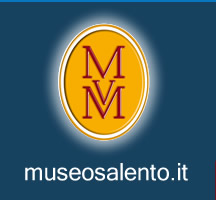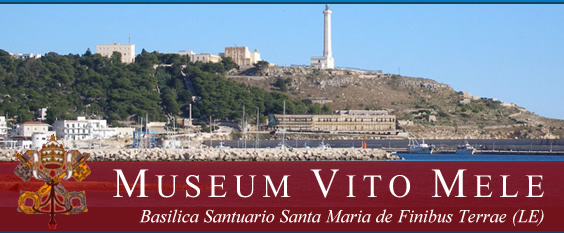|
Nasce nel 1945 ad Acquaviva delle Fonti (Ba);
si dedica allo studio di scenografia presso le
accademie di Firenze e Roma.
Importanti per la sua formazione e maturazione
artistica sono gli anni passati nella capitale,
dove entra a far parte dell’ambiente dei
giovani artisti della Nuova Figurazione Romana.
Sono questi anni fondamentali, in cui l’artista
è presente con il suo “fare arte”
in numerose manifestazioni tra cui, vanno ricordate,
la Quadriennale di Roma e la Biennale di Saragozza.
Tante sono le città italiane e straniere
che lo vedono protagonista con mostre personali:
Chicago, Francoforte, Milano, Firenze, Ravenna,
Bari, Potenza, Modena, Messina, Faenza e Roma.
Tra le opere più importanti pubbliche ricordiamo
il monumento commemorativo, per conto dell’Unesco,
a Gibellina in Sicilia o, in veste di designer
e architetto, le scenografie realizzate per il
Petruzzelli di Bari, e anche per importanti spettacoli
televisivi. Nel 1990
decide di lasciare l’insegnamento presso
l’Istituto Statale d’Arte di Bari, per
dedicarsi interamente alla scultura. Guaricci
incontra, nel suo modo di concepire l’arte,
il mondo “ludico” del gioco illusorio.
Le sue opere portano l’osservatore e l’artista
stesso ad andare
“oltre” a ciò che la realtà
propone così com’è, allargando
il nostro campo visivo, fino a raggiungere i giardini
segreti dell’immaginazione, dove tutto è
possibile, perché vestito dalle nostre
sensazioni. Delle sue opere più significative
fanno parte la Fiat
500, i Palloncini pietrificati, e le tante installazioni
e sculture che traggono ispirazione dall’acqua.
La materia diventa “spirito libero"
che segue con amore Guaricci, suo poeta metafisico.
Lia De Venere scrive che per lo scultore “(…)
l’opera è mero simulacro, non entità
concreta, è ombra senza spessore che prima
illude l’occhio e poi inquieta la mente.
(…) Privato di ogni funzione pratica, l’oggetto
si sterilizza in icona e la prigione di pietra
nella
quale lo sguardo di una redivivaMedusa lo ha segregato
per l’eternità, spinge infine la mente
a riflettere sull’eredità che la nostra
epoca
sta affidando alle generazioni future (..) ”.
L’artista vive e lavora ad Acquaviva delle
Fonti.
|

Paesaggio
a Sud-Est,1994 - tecnica mista, cm 45x150x5
|
|
|
|
|
Born in 1945 in Acquaviva delle Fonti in
the province of Bari, where he still lives and
works, Enzo Guaricci studied scenography in Florence
and Rome. The formative years in Rome played an
important part in his development as an artist.
He was involved with the group of young artists,
Nuova Figurazione Romana. It was during this time
that he took part in numerous events with his
“fare arte”. Among these were the Rome
Quadriennale and the Saragozza Biennale. He has
had one-man shows in Chicago, Frankfurt, Milan,
Florence, Ravenna, Bari, Potenza, Modena, Messina,
Faenza and Rome. The commemorative monument at
Gibellina in Sicily, commissioned by Unesco, is
among his important public works. As a designer
and architect he has made the sets for the Petruzzelli
in Bari and for television shows. In
1990 he gave up teaching at the Istituto Statale
d’Arte in Bari to devote himself entirely
to sculpture. In his conception of art he encounters
the
play world of illusory games. His works encourage
the observer and the artist himself to go beyond
what reality offers and enlarge our field of vision
to reach the secret gardens of the imagination
where everything is possible because it is clothed
in our sensations. Fiat 500 and i Palloncini pietrificati,
are two of his significant works, as are the installations
and sculptures inspired by water. His material
becomes a free spirit that follows Guaricci, its
metaphysical poet, with love. Lia De Venere wrote
that for the sculptor the work is merely a simalcrum
and not a concrete entity. It is a shadow without
substance that first eludes the eye and then troubles
the mind. Lacking any practical function, the
object neutralises itself into an icon and the
stone prison to which it has been consigned for
eternity by the resurrectedMedusa pushes the mind
to reflect on the inheritance that our era is
handing on to future generations.
.
|





